24 de noviembre 2020
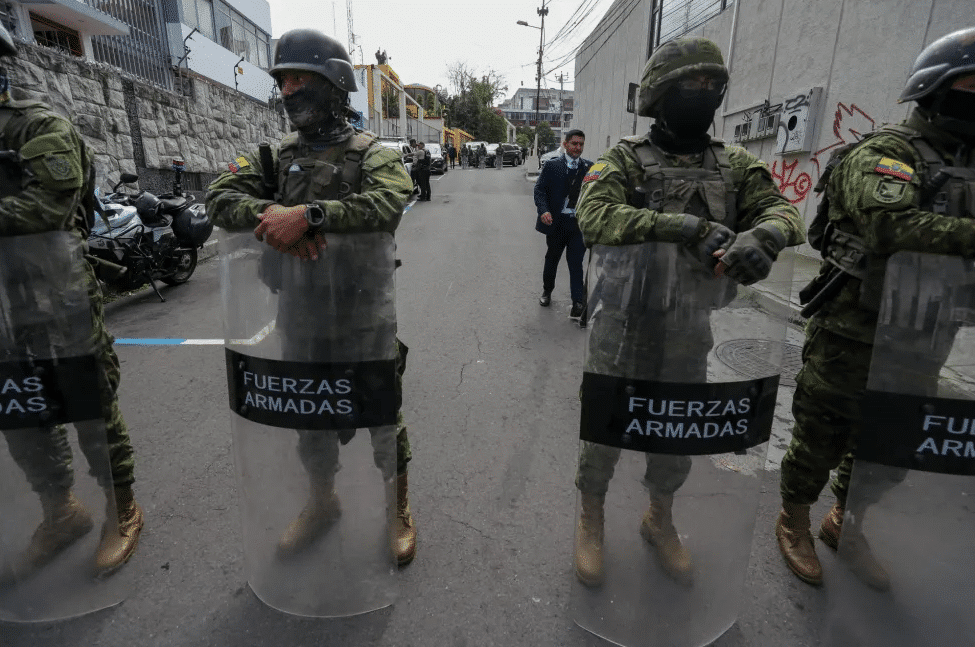
The Return of the Military

PUBLICIDAD 1M
PUBLICIDAD 4D
PUBLICIDAD 5D
Evacuated inhabitants try to return to their place of origin due to the lack of conditions in the shelters, but they no longer have a house to return
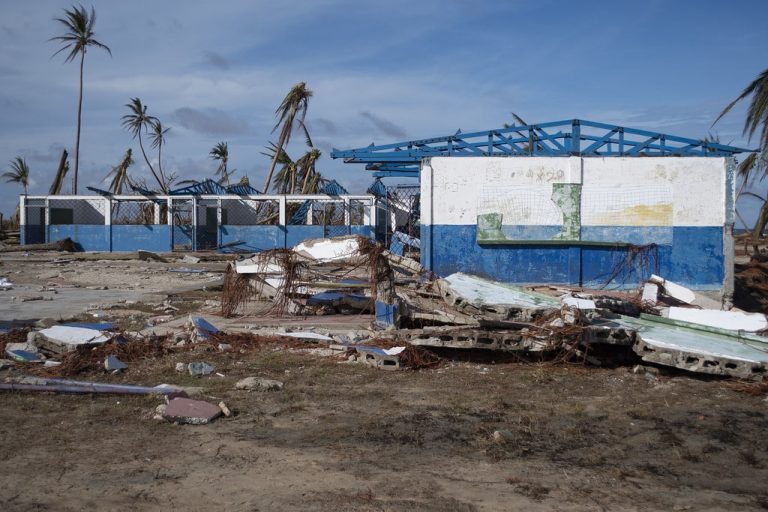
Evacuated inhabitants in Haulover try to return to their place of origin due to the lack of conditions in the shelters
The sun came out again in the North Caribbean of Nicaragua, but life in this region will never be the same after the impact of hurricanes Eta and Iota. The catastrophic winds and the huge waves that pounded the coastline on November 3rd and 16th destroyed entire communities, such as Haulover and Wawa Bar. Now the inhabitants began to return to search among the rubble for something to eat or to protect themselves from the next storm.
Haulover was a tourist community located 45 kilometers south of Bilwi, the departmental capital. “Tourists came here from Switzerland,” recalls one of the residents who last Friday returned to the point where they left their homes to protect their lives in a shelter in the city. Now the panorama is gloomy. A smell of dead animal emanates amid the dead vegetation. The water of the lagoon is now a combination of mud and salt water.
In this land sweep away by two hurricanes, the bell tower of the Moravian Church, the ruins of the medical clinic and the school stand out. All were concrete structures that gave in to the force of the wind and rains. Only memories and some pillars remain of the wooden houses that indicate the place where they were located.
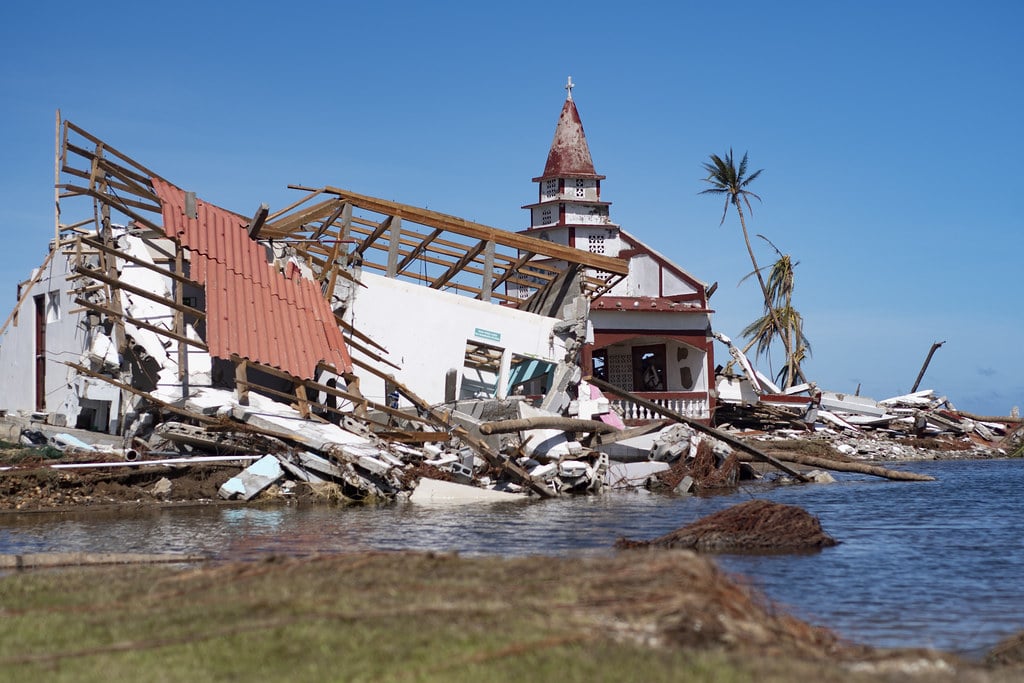
The bell tower of the Moravian Church of Haulover stands out among from the rubble of the community devastated by Hurricane Iota. Photo: Elmer Rivas / Confidencial
Among the rubble of the Haulover school there are still pieces of the books and toys used by the children. Some of those children are now exposed to diseases such as malaria, which has bounced back in recent weeks. This was disclosed by VP Rosario Murillo on November 9, after the first hurricane hit the Nicaraguan Caribbean.
According to Murillo, a week before hurricane Iota finished destroying what has shaken by Eta, Nicaragua was already registering an increase of 33% in malaria cases and 32% in dengue cases. However, Murillo showed herself optimistic with the decrease of 61% in the cases of leptospirosis and 25% in pneumonia. She hasn’t commented on the matter again after the passing through of the second hurricane.
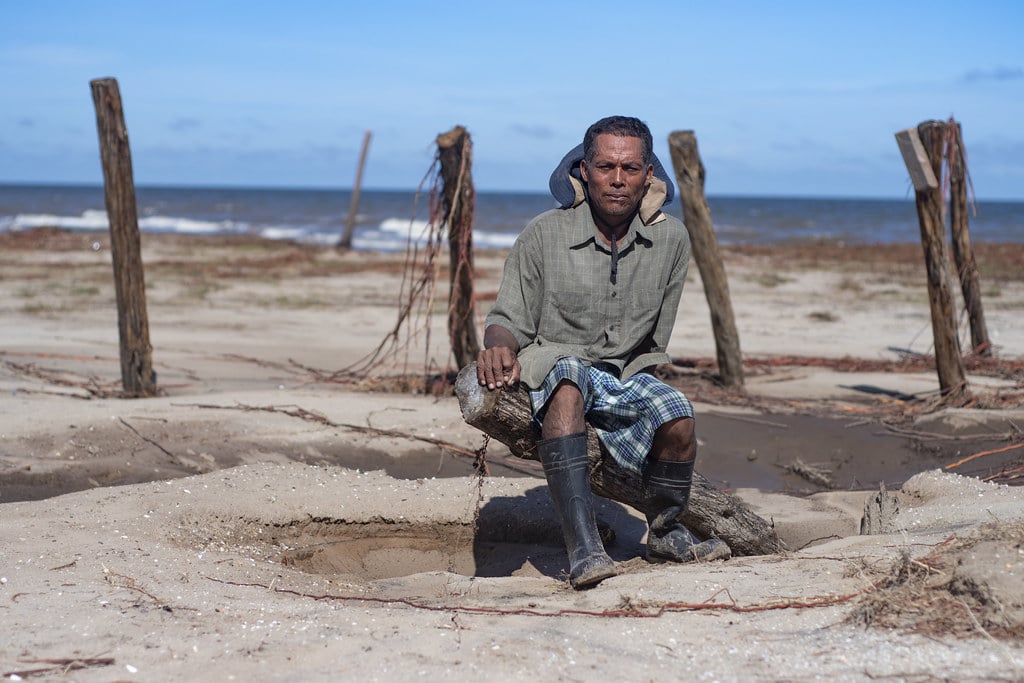
David’s house was damaged by Hurricane Eta and two weeks later Hurricane Iota finished destroying it. Photo: Elmer Rivas / Confidencial
Illnesses are the first of many calamities faced by those who lost everything. Two days after hurricane Iota struck, David returned to Haulover. He is originally from Puerto Cabezas but 20 years ago he moved to this place. He still cannot overcome the impression caused when he saw his town destroyed.
In the place where David’s house was, only a few pillars remain on the sand that sinks with each step he takes. There is a humid heat and there is nothing to cover the rays of the sun. The coconut trees of over 25 meters high were uprooted and piled up among lots of garbage. Haulover is now a deserted town in the Caribbean.
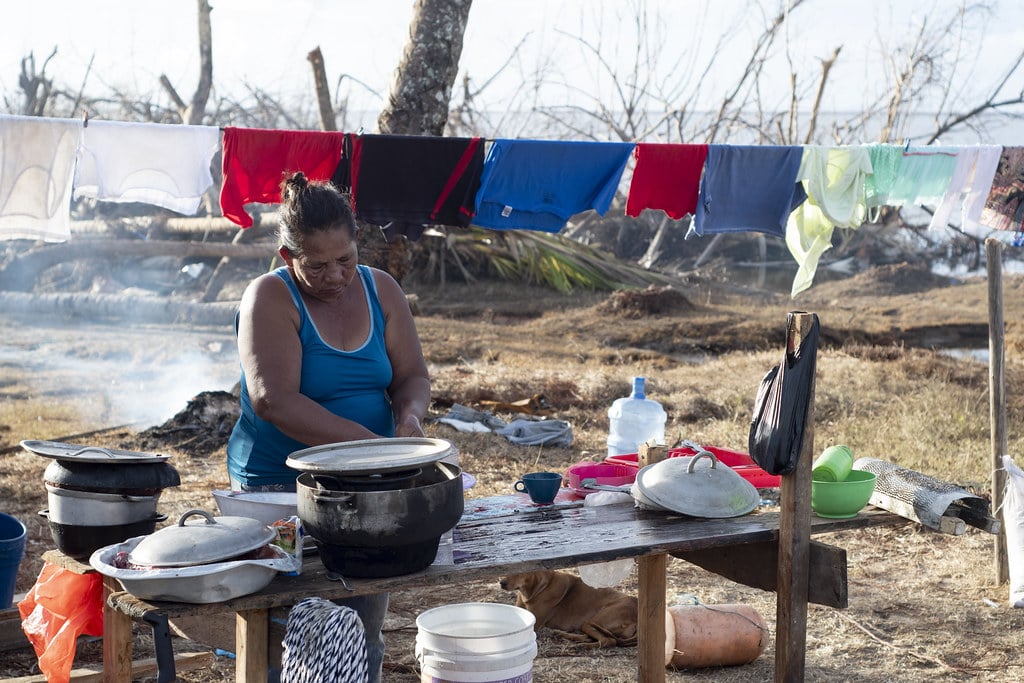
Some inhabitants of Haulover returned to their land to try to recover what was left among the rubble. Photo: Elmer Rivas, Confidencial.
Despite the lack of infrastructure, clean water and food, some Haulover villagers left the shelters in Bilwi to return to the land they were born. They returned because, they say, they were sleeping on the floor, crowded together and were eating only once a day.
Some women search among the rubble for clothing, kitchen utensils or whatever they can find. The men, on the other hand, collect pieces of zinc roofing, twisted nails and pieces of wood to rebuild houses destroyed by the hurricanes.
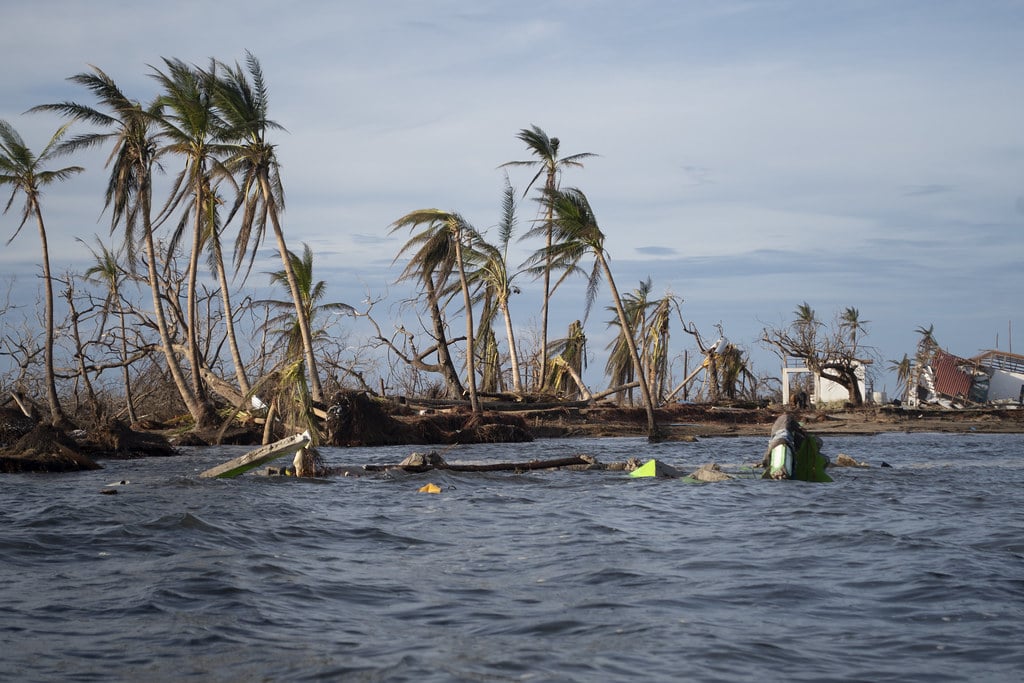
The large waves caused by the hurricane broke the barrier that separated the Haulover lagoon from the Caribbean Sea. Photo: Elmer Rivas, Confidencial
The waves also broke the land barrier that separated the Haulover lagoon from the Caribbean Sea, forming a channel that split the town in two. In the place you can still see the concrete pillars of the houses and some fallen coconut trees. Likewise, the point where the water of the lagoon mixes with the sea.
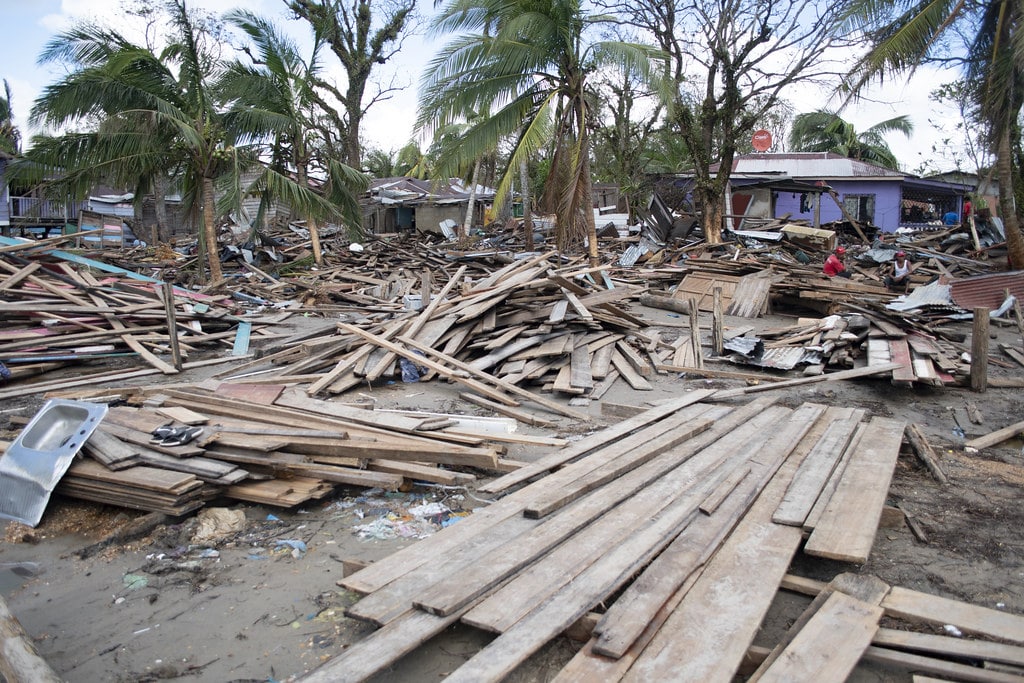
he “El Muelle” neighborhood of the city of Bilwi was destroyed by the waves. Photo: Elmer Rivas, Confidencial
The coastal zone of Bilwi was sweep away by the waves. The inhabitants who tried to recover from the damages caused by hurricane Eta watched with sadness how the second hurricane eliminated all they had worked for. Getting up a second time is even more difficult, they say, construction materials are scarce, and prices have risen.
One of the most affected neighborhoods is El Muelle, where the Government began to distribute roofing sheets to their supporters. The other residents complain about the abandonment of the state and resent the lack of aid to rebuild their homes.
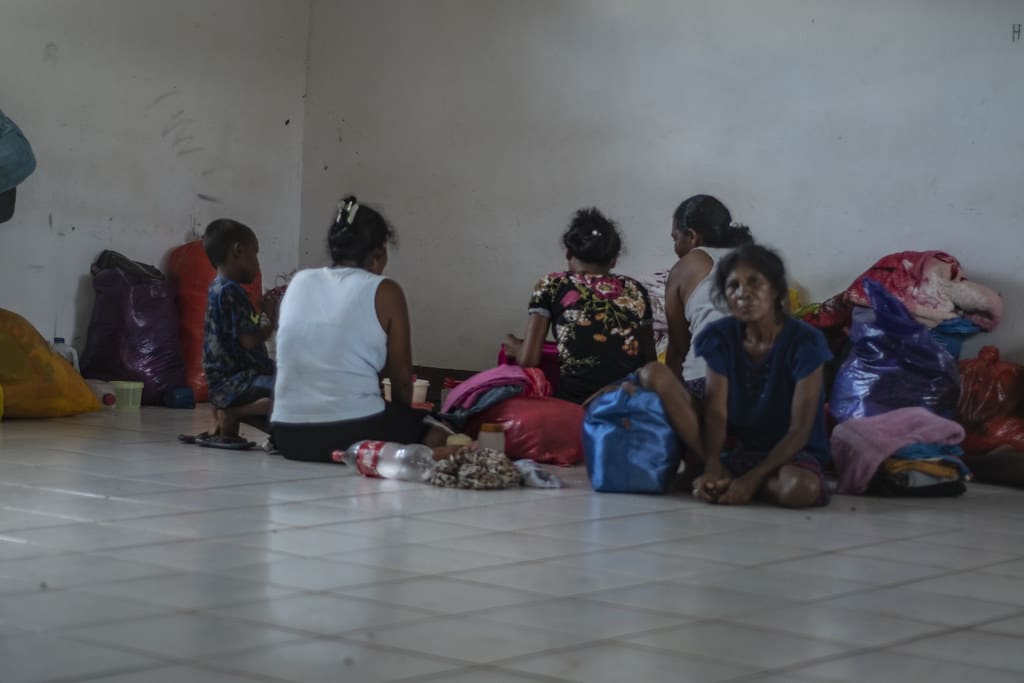
Evacuated residents remain crowded together and sleeping on the floor. Photo: Elmer Rivas / Confidencial
In the shelter located in the Bluefields Indian and Caribbean University (BICU), white rice is eaten once a day. More than 2,000 persons, who were evacuated a day before Iota impacted the Caribbean coastline, remain crowded sleeping on the floor and the presence of authorities is minimal.
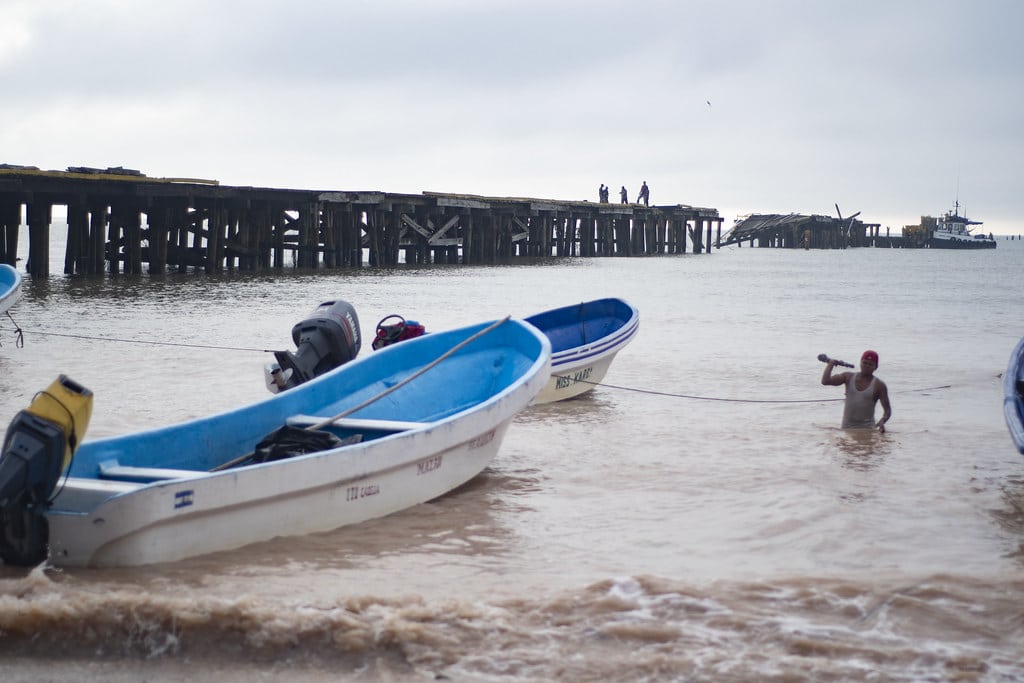
The Bilwi pier broke into several segments and some of them were thrown onto the shore. Photo: Elmer Rivas / Confidencial
Archivado como:
PUBLICIDAD 3M
Confidencial es un diario digital nicaragüense, de formato multimedia, fundado por Carlos F. Chamorro en junio de 1996.
PUBLICIDAD 3D